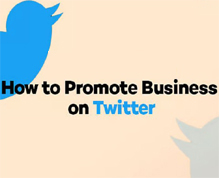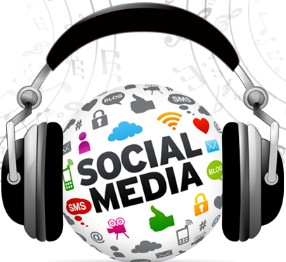Social media has become an indispensable tool for businesses in almost every industry, and book publishing is no exception. The rapid rise of social media platforms has transformed the way publishers market their books, engage with their audience, and create buzz around new releases. With billions of active users across platforms such as Facebook, Instagram, Twitter, TikTok, and others, book publishers have a unique opportunity to harness the power of social media to advertise, promote, and even sell books. In this article, we’ll explore how book publishers may use social media for advertising and the different strategies that can help them achieve success.
The Power of Social Media in Book Publishing
Social media platforms have become a vibrant marketplace for books, offering publishers a direct connection to their target audience. Traditional methods of advertising, such as print ads and TV commercials, are becoming less effective and more costly. Social media, on the other hand, allows publishers to reach vast audiences at a fraction of the cost. The interactive nature of social media also facilitates two-way communication between publishers and readers, fostering a sense of community that was previously impossible in the publishing world.
Platforms like Facebook and Instagram allow publishers to run targeted ad campaigns, while Twitter and TikTok provide the opportunity to create viral content. Social media offers the flexibility to promote a wide range of book genres, from fiction to non-fiction, memoirs to academic texts, to specialized genres like cookbooks, children’s books, and graphic novels. Publishers can use various tools to segment audiences and tailor content specifically for each platform, maximizing reach and engagement.
1. Creating a Strong Social Media Presence
The first step for book publishers to harness the power of social media for advertising is by building a strong presence across relevant platforms. Different social media platforms have different audiences, and publishers should choose the ones that best align with their target demographic.
With over 2.8 billion monthly active users, Facebook remains one of the most popular platforms for reaching book lovers. Publishers can create business pages to showcase books, engage with readers, and post updates about upcoming releases. Facebook’s ad tools also allow publishers to run targeted campaigns, focusing on users who have shown an interest in specific genres or authors. Additionally, Facebook Groups dedicated to book lovers, such as “Book Clubs” or “Reading Groups,” offer great opportunities for organic engagement and word-of-mouth marketing.
Instagram has become a haven for visually driven content, and book publishers can capitalize on this by creating aesthetically pleasing posts that showcase book covers, quotes, and behind-the-scenes looks into the publishing process. Instagram Stories and Reels offer a more casual way to engage with audiences, while the ability to create polls, ask questions, and feature reader reviews makes it easy to start conversations around books. Hashtags like #Bookstagram have created an entire subculture of book lovers who actively share reviews, recommendations, and book-related content.
Twitter is known for its brevity and real-time updates, making it ideal for announcements, discussions, and book news. Publishers can use Twitter to share release dates, book reviews, and teasers. The platform’s trending topics and hashtags provide a way to join ongoing conversations and create viral moments around specific books. Twitter is also great for engaging with authors and readers, as it allows for quick interactions and direct feedback.
TikTok
TikTok’s rise in popularity has brought about a whole new way of advertising for book publishers. The #BookTok trend has exploded, with millions of users posting book reviews, recommendations, and reading challenges. BookTok has become a powerful force in the publishing world, with some books seeing a dramatic rise in sales due to viral TikTok videos. Publishers are increasingly collaborating with influencers and content creators to showcase books and encourage discussion among their audiences. The authenticity of TikTok’s community makes it one of the most effective platforms for word-of-mouth advertising.
2. Influencer Marketing and Partnerships
One of the most effective ways for publishers to advertise on social media is by leveraging influencer marketing. Social media influencers, particularly those in the book space, have a dedicated following of readers who trust their recommendations. By partnering with book influencers—also known as BookTubers, Bookstagrammers, or BookTokers—publishers can tap into an engaged community of book lovers who are likely to share and promote their content.
Influencers can create sponsored posts, host giveaways, or feature books in their regular content, whether that’s through book reviews, “haul” videos, or themed challenges. Publishers may also offer influencers early access to books, exclusive interviews with authors, or access to events, creating a mutually beneficial relationship. These partnerships often have a more personal and authentic feel compared to traditional advertisements, which helps build trust with readers.
3. Engaging Content Creation
Content is king in the world of social media, and book publishers must focus on creating engaging, shareable, and interactive content to capture the attention of potential readers. Rather than just promoting a book’s title and release date, publishers can create multimedia content that draws readers in and sparks their curiosity.
Visual Content
The book cover is often the first thing a potential reader sees, and it can be a powerful tool for social media marketing. Publishers can create visually appealing posts featuring book covers, in addition to teaser videos, character sketches, author interviews, or sneak peeks into the story. The more visually striking and immersive the content, the more likely it is to be shared by users.
Interactive Content
Interactive content such as polls, quizzes, and contests can help boost engagement. Publishers can run polls asking followers to vote on their favorite book genres or the next big book trend. Quizzes about character personalities or plot predictions can encourage users to participate and share their results. Running giveaways where users share posts or tag friends can also help generate organic reach and visibility for a book.
Behind-the-Scenes Content
Social media provides a unique opportunity for publishers to offer a glimpse behind the curtain. Sharing behind-the-scenes content, such as the writing process, editing, or the creation of a book cover, humanizes the brand and connects readers to the book on a deeper level. Author interviews, Q&A sessions, and live streaming events can also be used to engage followers and create excitement for a book’s release.
4. Paid Advertising Campaigns
While organic social media marketing is effective, paid advertising campaigns can significantly boost the visibility of a book. Social media platforms offer a variety of paid ad options, from sponsored posts to video ads, that can be targeted to specific demographics.
Facebook and Instagram Ads
Facebook and Instagram offer highly targeted advertising options, allowing publishers to focus their campaigns on users who are likely to be interested in a particular book. These platforms use sophisticated algorithms that take into account users’ interests, browsing history, and online behavior. Publishers can target audiences based on factors such as age, location, language, and even book genre preferences. Sponsored posts and carousel ads can showcase multiple books or features of a single title, while video ads can give readers a preview of what to expect.
Twitter Ads
Twitter’s paid ad options allow publishers to promote tweets to specific audiences. Promoted tweets can increase visibility for new releases, author interviews, or book events. Twitter’s ad platform also allows publishers to set up retargeting campaigns to reach users who have already interacted with their content or website.
TikTok Ads
TikTok ads are relatively new but have proven effective in the book publishing industry. Publishers can create short, engaging videos that feature the book in a fun and creative way. TikTok ads can also take advantage of the platform’s “For You” page, helping content go viral and reach a wider audience.
5. Building a Community and Fostering Reader Engagement
One of the most valuable aspects of social media for book publishers is the opportunity to build a community of engaged readers. Publishers can encourage readers to share their thoughts and opinions on books, ask questions, and participate in discussions. This type of community building creates a sense of loyalty and excitement around a book, making readers feel more connected to the author and publisher.
Publishers can also encourage user-generated content by hosting hashtag challenges or asking readers to share photos and reviews of books they’ve read. By fostering this sense of community, publishers can create organic buzz and loyalty that extends beyond the initial marketing campaign.
6. Tracking Analytics and Adjusting Strategies
One of the greatest advantages of social media marketing is the ability to track and measure results in real-time. Social media platforms provide valuable insights into how content is performing, who is engaging with it, and what types of content are driving the most traffic. By analyzing these metrics, book publishers can refine their advertising strategies, identify which platforms and tactics are most effective, and make data-driven decisions to improve future campaigns.
Social media has transformed the way book publishers approach advertising, providing an affordable and effective way to engage with readers, promote new releases, and create buzz around books. By building a strong presence, partnering with influencers, creating engaging content, utilizing paid ads, and fostering a loyal community, publishers can harness the power of social media to reach new readers and increase sales. As social media platforms continue to evolve, the potential for book publishers to use these tools for advertising will only grow, making it an essential part of any modern marketing strategy in the publishing world.




